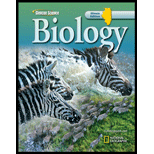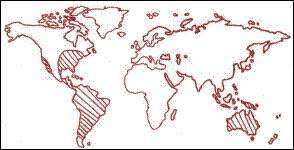
Concept explainers
To write:
Ecological factors that limit the range of mammals of your choice (marsupials) that currently limit the potential range or may affect the group in the future. And recommendations that would ensure the success of the mammal group.
Introduction:
Ecosystem consists of the biotic and abiotic factors that together affect any organism’s life.
To survive, an organism undergoes several modifications and changes to increase high chances of survival.
Explanation of Solution
Marsupials are a particular group of mammals that carry their younger ones in pouches until they are capable of surviving on their own. Marsupials include kangaroos, wombats and opossum.
Marsupials used to occur all around the world, but currently, they inhabit very few regions of the world.
The ecological factors that affected the marsupials were many. Habitat loss caused the marsupials to shift to smaller and smaller regions. Many native species became extinct due to the same reasons.
Chances of becoming prey are high for marsupials. This predation pressure also led to a decline in the population of marsupials.
Very little is known about the suitable climatic conditions necessary for the survival of marsupials, therefore, they are not easy to be maintained in artificial surroundings, like zoos.
To ensure the success of marsupials, a number of factors can be taken into account. Better understanding must be developed about the lifestyle and behavior of the marsupials. The habitat that is most suitable for them must be protected. Organisms that are predators for marsupials and can survive in a wide range of habitats must be separated from the marsupials.
The given map represents the worldwide distribution of mammals. The shaded region on the map represents the areas where the marsupials are present.

Thus, marsupials are a very unique group of mammals. They are very unique and survive in limited environmental conditions only.
Chapter 30 Solutions
Biology Illinois Edition (Glencoe Science)
Additional Science Textbook Solutions
Campbell Biology: Concepts & Connections (9th Edition)
Physics for Scientists and Engineers: A Strategic Approach, Vol. 1 (Chs 1-21) (4th Edition)
Anatomy & Physiology (6th Edition)
Microbiology with Diseases by Body System (5th Edition)
Microbiology: An Introduction
Chemistry: An Introduction to General, Organic, and Biological Chemistry (13th Edition)
 Human Anatomy & Physiology (11th Edition)BiologyISBN:9780134580999Author:Elaine N. Marieb, Katja N. HoehnPublisher:PEARSON
Human Anatomy & Physiology (11th Edition)BiologyISBN:9780134580999Author:Elaine N. Marieb, Katja N. HoehnPublisher:PEARSON Biology 2eBiologyISBN:9781947172517Author:Matthew Douglas, Jung Choi, Mary Ann ClarkPublisher:OpenStax
Biology 2eBiologyISBN:9781947172517Author:Matthew Douglas, Jung Choi, Mary Ann ClarkPublisher:OpenStax Anatomy & PhysiologyBiologyISBN:9781259398629Author:McKinley, Michael P., O'loughlin, Valerie Dean, Bidle, Theresa StouterPublisher:Mcgraw Hill Education,
Anatomy & PhysiologyBiologyISBN:9781259398629Author:McKinley, Michael P., O'loughlin, Valerie Dean, Bidle, Theresa StouterPublisher:Mcgraw Hill Education, Molecular Biology of the Cell (Sixth Edition)BiologyISBN:9780815344322Author:Bruce Alberts, Alexander D. Johnson, Julian Lewis, David Morgan, Martin Raff, Keith Roberts, Peter WalterPublisher:W. W. Norton & Company
Molecular Biology of the Cell (Sixth Edition)BiologyISBN:9780815344322Author:Bruce Alberts, Alexander D. Johnson, Julian Lewis, David Morgan, Martin Raff, Keith Roberts, Peter WalterPublisher:W. W. Norton & Company Laboratory Manual For Human Anatomy & PhysiologyBiologyISBN:9781260159363Author:Martin, Terry R., Prentice-craver, CynthiaPublisher:McGraw-Hill Publishing Co.
Laboratory Manual For Human Anatomy & PhysiologyBiologyISBN:9781260159363Author:Martin, Terry R., Prentice-craver, CynthiaPublisher:McGraw-Hill Publishing Co. Inquiry Into Life (16th Edition)BiologyISBN:9781260231700Author:Sylvia S. Mader, Michael WindelspechtPublisher:McGraw Hill Education
Inquiry Into Life (16th Edition)BiologyISBN:9781260231700Author:Sylvia S. Mader, Michael WindelspechtPublisher:McGraw Hill Education





